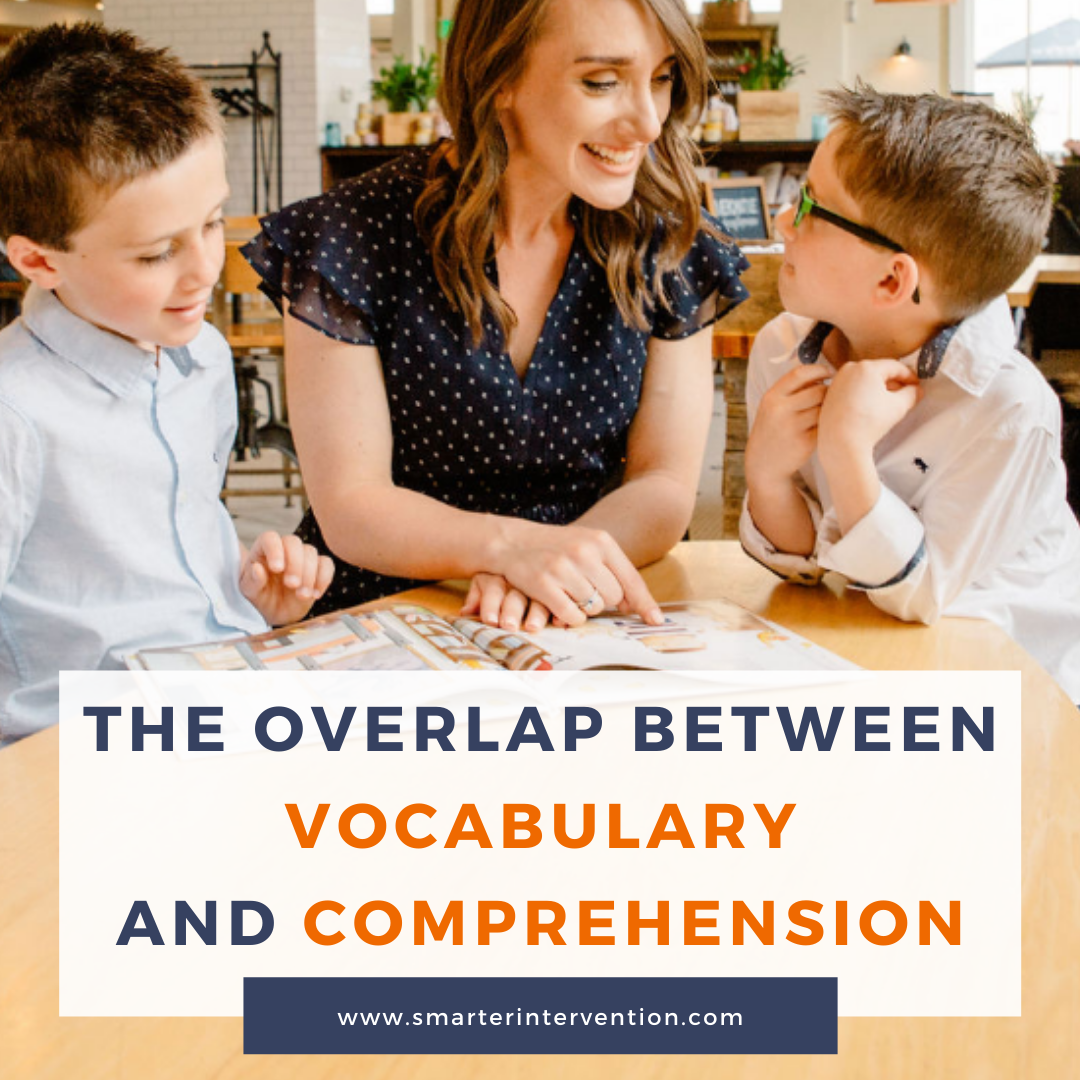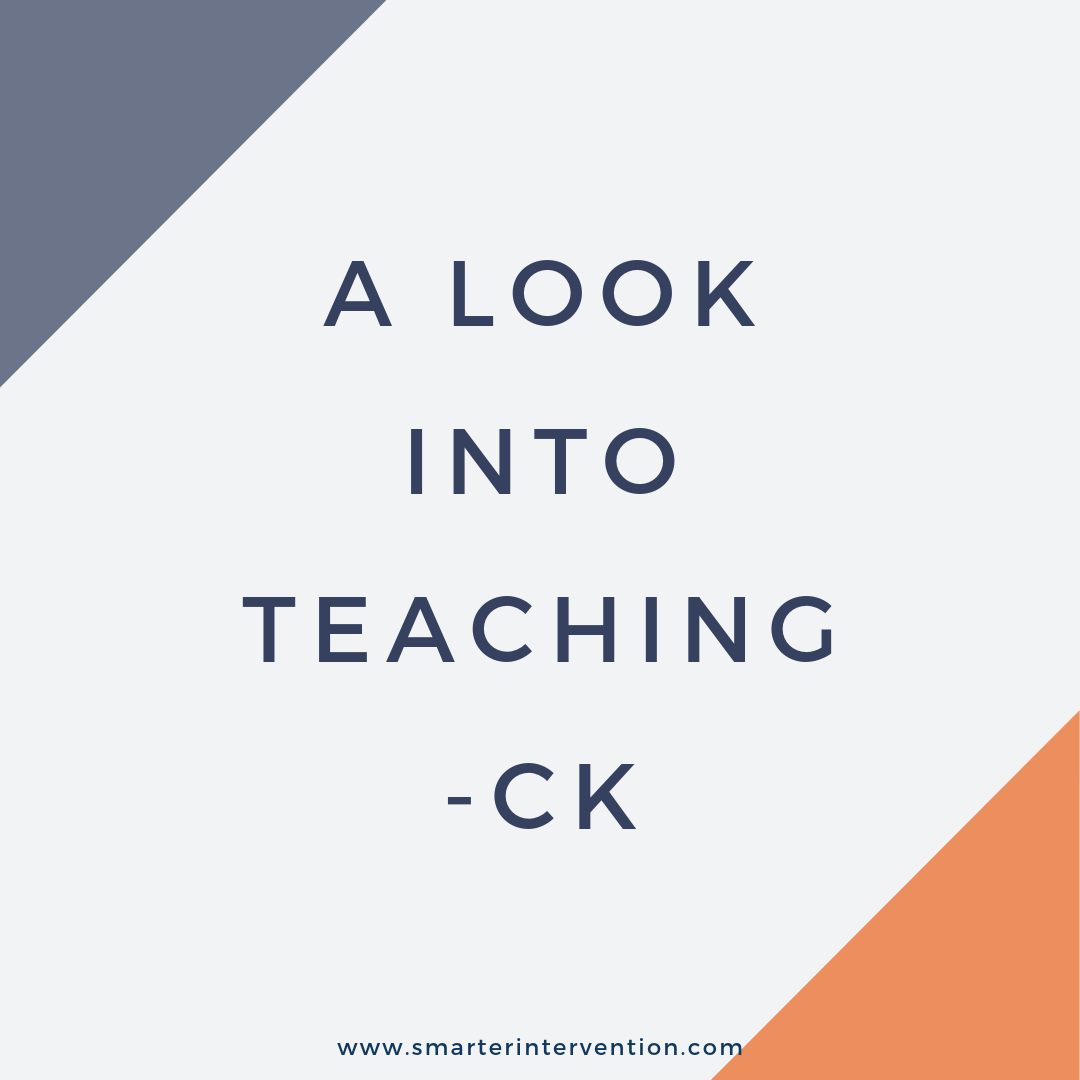Science-based literacy resources and articles
for families, educators and schools
Search by Category:
Categories
- Advocacy
- Authentic Literature
- Business
- Comprehension
- Data Tracking
- Differentiation
- Dyslexia
- Evaluation and Assessment
- Executive Functioning
- Games & Activities
- Helping My Child At Home
- How To
- IEP/504 Plan
- Lesson Planning
- Math
- Online Intervention
- Organization
- Parents
- Phonics
- Phonological Awareness
- Reading Comprehension
- Reading Fluency
- Research
- SLP
- Spelling
- Vocabulary
- Writing
The Overlap Between Vocabulary and Comprehension
So often, my students struggle with the main idea and key details because they are either WAY too broad, WAY too specific, or start talking in the longest run-on sentence trying to tell me every last detail about the passage they can squeeze in.
Recently, I have found that it has actually been a vocabulary activity that has allowed me to explicitly teach them how the ideas in the stories and passages we read come together to form the main idea and key details.
Vocabulary is More than Morphology
Don’t get us wrong - we fully believe that morphology is important! In our program, we have two full levels devoted to morphology.
We need to recognize, however, that morphology is only a very small piece of vocabulary and we need to be explicitly teaching vocabulary with ALL of our students, regardless of age or level. Read on to learn exactly what vocabulary instruction needs to include to support vocabulary development.
Where Do Students Need Explicit Instruction?
Students struggle for different reasons and in different capacities. In order to truly support our struggling readers, we must not only understand why students are struggling but also -
Where are students struggling to read specifically?
Which specific areas are causing students to be ineffective readers? Because the bottom line is if we are trying to support struggling readers, we need to stop applying one-size-fits-all approaches and we need to know what type of support is needed to get our struggling readers on track. Keep reading to learn more!
The 3 Things Your Literacy Intervention Materials MUST Include
In this field, we are bombarded with theories, approaches, information and often, it can be difficult to know exactly what resources you need.
Whether you are looking for activities to supplement a program that your school has provided you with, or, you are looking for a comprehensive curriculum, there are a few things that you should always be looking for. Keep reading to learn more…
How to Teach Vocabulary Explicitly
Whenever we talk about literacy, we always come back to this literacy processing triangle. Now, many reading intervention programs do a nice job of connecting the bottom points of the triangle by working on the orthography to phonology connection. Much less frequently, we see the third point, semantics, tied into a program
7 Must Haves for Research Based Reading Intervention
Whether you are a teacher, a parent, an SLP, or an interventionist, if you’re anything like us…which you are, because you’re here, you care about providing top notch intervention or instruction for your students. However, with all the differing opinions out there in the field of education it can be difficult to know if what you’re doing is the right thing. Click through to read about our 7 Must Haves for effective, research-based reading intervention.
This is Why Your Lessons Aren't Sticking
One of the most “eye-opening” moments for me in intervention, was when I had a student come in and ask, “what are the other kinds of letters besides vowels and consonants?” I didn’t understand. He asked again and when I explained that those were the only two kinds of letters, he was AMAZED. I had never thought to explain this to him before because I assumed he knew that there were no other types of letters…and that was the problem.
How YOU Can Work SMARTER Not Harder
We’re sure that you have heard it before. “You should be working smarter, not harder!” It’s a fairly common expression that most people use to help motivate them to be more efficient and stop fumbling around in their work… but it’s more than that. These are the 7 steps you need to work “SMARTER” in your intervention and finally start seeing the results you have been wanting.
A Look into Teaching -ck
Reading intervention for struggling readers, such as those with dyslexia or other reading disabilities needs to be systematic, sequential, cumulative, targeted, research-based…the list goes on and on. But how do you come up with a lesson plan that has reading and spelling activities that hits on all of these targets for your struggling readers? Well look no further, we are giving you behind the scenes access to our comprehensive lesson plans that leave nothing out for your struggling readers so that they can get to grade level once and for all and you can stop spending all your time planning.
What is Structured Literacy?
Discover the power of Structured Literacy! Unveil a systematic, multi-sensory, and cumulative approach to literacy instruction. Learn how to build a structured literacy program, addressing the core components of phonological awareness, phonics, vocabulary, fluency, and comprehension. Elevate your teaching with intentional, thought-out progressions for lasting impact!
Comprehension Strategy Instruction Should be a Spiral
Discover effective comprehension strategies! Learn how explicit instruction enhances understanding through direct explanation, modeling, guided practice, and application. Explore our grade-based strategies to empower students at every level. Download our free guide aligned with Common Core State Standards for targeted instruction.
Understanding the Six Syllable Types - Vowel Teams
Discover the science behind teaching the six syllable types for effective literacy instruction! Dive into our blog and demystify the process of teaching each type, from closed to stable final syllables. Learn strategies, explore resources, and elevate your reading instruction now!













